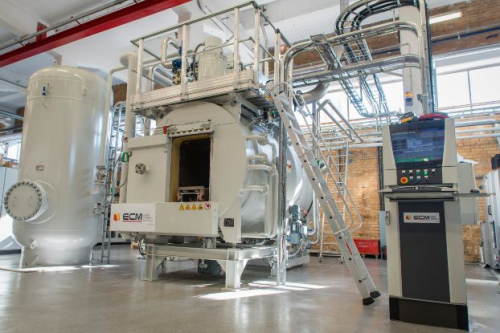
Höganäs says this will make it easier for the company to make cost-efficient, high-quality PM components. Chromium-alloyed powders provide a cost-efficient way to manufacture high-performance applications. However, PM components produced from such powders cannot be surface hardened by conventional gas carburising and oil quenching. To meet the stringent requirements on quality and dimensional accuracy, an alternative is to use LPC with pressurised gas quenching.
LPC is a well proven heat treatment technology already globally applied by many OEMs. Its benefits over traditional atmospheric carburising include process design flexibility including high temperature sintering, precisely monitored process control, well-defined uniform and tailored case-depths as well as the elimination of any risk for oxidation.
Besides this, LPC results in reduced distortions during the heat treatment process and can improve the overall dimensional quality and tolerances of PM components. As opposed to traditional methods, the processing under vacuum versus atmospheric, also reduces the risk of contaminants and delivers clean and bright surfaces. There is also the possibility of reducing overall CO2 emissions and eliminating the need for secondary cleaning processes, such as shot blasting or washing.
Due to the overall reduced process chain and reduced time for the handling of parts, the one-cycle batch vacuum sintering combined with low pressure carburising and gas quenching, leads to lower total factor cost for heat treated components.
The LPC furnace works by alternate injection of acetylene (for carburising) and nitrogen (for diffusion) at low pressure (5-10 mbar), the parts get carburised by decomposition of acetylene at the surface, followed by diffusion of carbon to an appropriate carburising depth. After the carburisation the parts are moved to the quench cell where they are quenched in nitrogen at pressure up to 20 bar. The high pressure nitrogen in the quench cell is circulated by turbines through heat exchangers to obtain high cooling rates.
“The furnace allows a very precise control of the carbon profile and, thanks to the gas cooling, also reduced distortion compared to oil quench,” Magnus Dahlström, Höganäs development engineer, explained.
It can also be used to combine de-lubrication and sintering of the parts with heat treatment into one single process cycle, starting with green parts and resulting in heat treated and surface hardened parts.
The new furnace concept will be exposed and presented to the PM industry community and public for the first time during the forthcoming PoP Day on 18 September.
“With the new furnace in the PoP Centre we can offer state-of-the-art technology for sintering and hardening of PM parts in pilot scale,” said Mats Larsson, Höganäs manager PM components – process development. “Our intention is to work closely with customers and end-users to develop attractive PM solutions, both from a cost and functional perspective, and ultimately to help reduce time to market and grow the market for PM parts in high-strength applications, with load carrying gears as the main target.”



